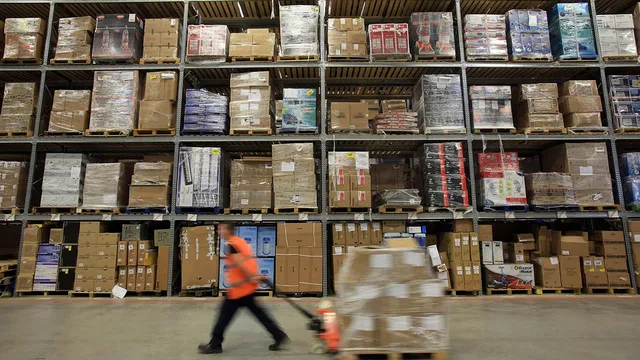
Macy's and Target cut reliance on China amid tariff war
2025-06-03 05:00- Retailers are restructuring their sourcing strategies to lessen dependence on China.
- Macy's and Target have significantly reduced the percentage of products sourced from China.
- The ongoing trade war and resulting tariffs compel U.S. companies to seek stable alternatives.
Express your sentiment!
Insights
The U.S. has been experiencing economic challenges related to reliance on China for products and materials, as highlighted by the ongoing trade war initiated under former President Donald Trump. Retailers like Macy's and Target have been restructuring their supply chains to mitigate the impacts of tariffs imposed on Chinese goods. Reports indicate that Macy's reduced its reliance on Chinese products from over 50% before the pandemic to 20% by the end of the last fiscal year. Meanwhile, Target has also made strides, ensuring that only about 30% of its products come from China, with goals to lower this to below 25% soon. Tariffs have created significant difficulties for many businesses. Trump's administration has enforced tariffs as high as 145% on certain imports, temporarily reducing them under various agreements, but accusations of violations have complicated matters. Companies like Walmart have voiced their concerns and called for shifts in sourcing to create more resilient supply chains. Walmart reported that a significant portion of its spending is directed toward domestically produced products, but challenges remain as about one-third of its inventory still originates from overseas suppliers. In addition to tariffs, the essential dependency on Chinese resources for pharmaceuticals and rare earth materials has raised alarms within the U.S. government. Experts have warned that this reliance poses risks to national security and public health, compelling the Trump administration to pursue partnerships with other nations such as Ukraine to establish domestic sources. It has been observed that China's market dominance in critical goods can lead to shortages, as seen during the pandemic when vital medical supplies were halted from export. Looking ahead, the challenges posed by the trade war and dependency on foreign supply chains continue to drive conversations around U.S. manufacturing. Retailers must navigate these complexities while striving for more balanced sourcing strategies that can ensure operational stability and safeguard against future disruptions. As legal battles over tariffs persist, the necessity for America to reduce its economic reliance on adversarial trading partners remains a topic of urgency. The changing dynamics within retail supply chains reflect broader considerations about economic independence and resilience.
Contexts
The impact of Trump tariffs on the retail industry has been a significant topic of discussion, particularly in understanding how these tariffs have reshaped market dynamics since their implementation. The primary objective of these tariffs was to reduce the trade deficit and protect American manufacturers from foreign competition. However, this strategy had a ripple effect throughout the retail sector, which relies heavily on imported goods. Many retailers experienced increased costs due to higher prices on imported products, which significantly impacted their profit margins. As a result, some retailers opted to absorb these costs, while others passed them on to consumers through increased prices. This led to an overall rise in consumer prices, diminishing purchasing power and altering consumer behavior across several retail segments. Additionally, the tariffs created uncertainty in supply chains, complicating operations for retailers that depend on crucial imports for their inventory. Some retailers faced delays in product availability, resulting in reduced sales during critical seasons. This uncertainty pushed many companies to reconsider their sourcing strategies, with some seeking domestic alternatives or shifting their supply chains to countries unaffected by the tariffs. This shift has prompted substantial changes in operational plans and supplier relationships within the retail landscape. Moreover, the tariffs disproportionately affected certain sectors of the retail industry. For example, electronics retailers and apparel merchants were particularly vulnerable due to their high reliance on imported goods from China and other countries. Consequently, these retailers needed to adjust their business models and pricing strategies swiftly to mitigate the financial impact. Furthermore, the tariffs sparked challenges for smaller retailers, who often do not possess the same leverage as larger chains to negotiate better prices with suppliers, thus exacerbating financial pressures on these smaller businesses. In response to these changes, many retailers have begun to adopt various strategies to adapt to the new tariff environment. Some have focused on enhancing their online presence and diversifying their product offerings to reduce reliance on imports. Others have invested in technology to optimize operational efficiencies, reduce costs in the long run, and improve customer engagement. As the retail industry continues to navigate the consequences of these tariffs, it remains evident that ongoing adjustments will be necessary, not only to recover from the initial impacts but also to position themselves competitively in a global market that remains volatile and unpredictable.